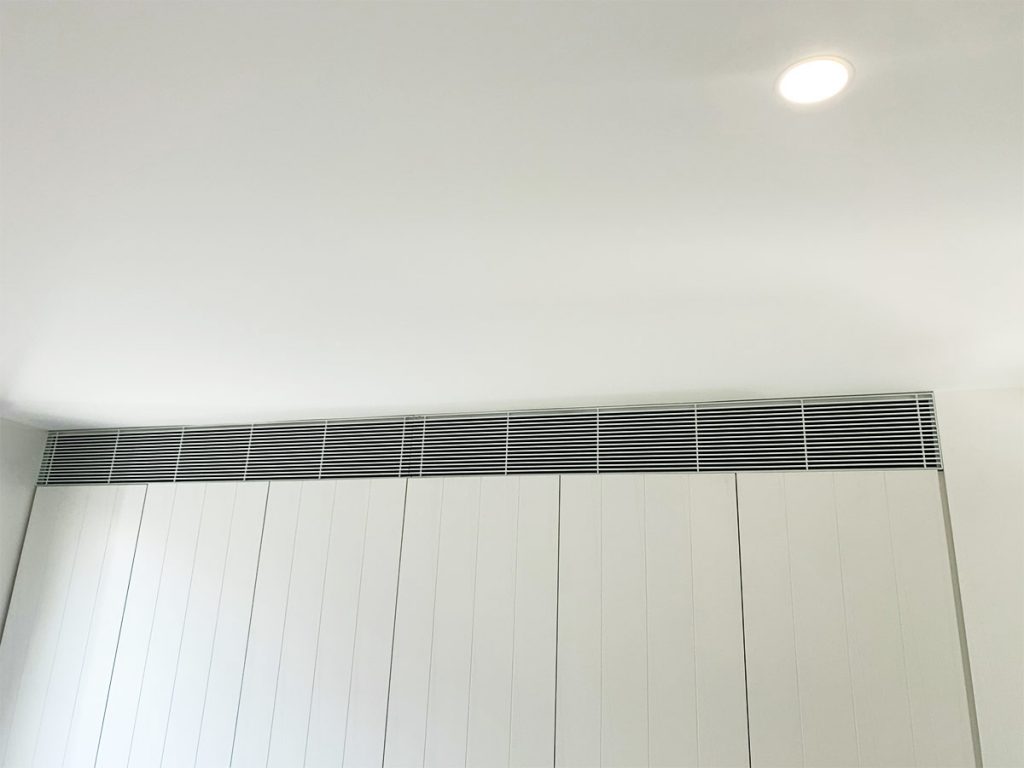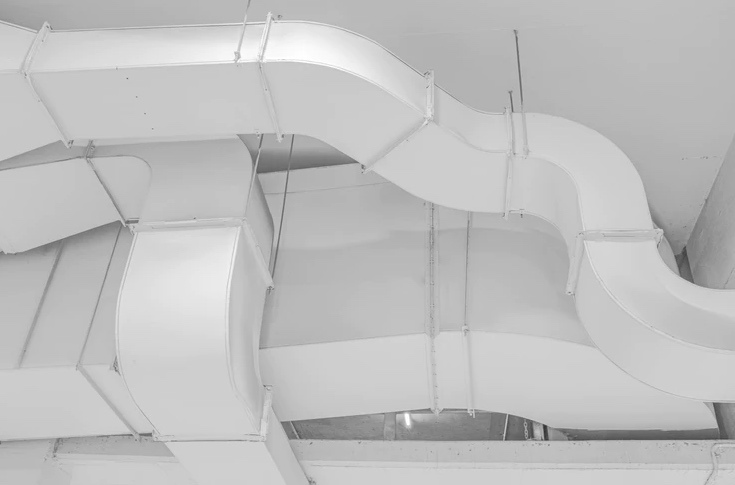If you’ve ever had to purchase an HVAC system for a commercial building, whether it’s for a new property or to replace the system in an existing property, you may have been overwhelmed with the choices. Of course, you know how important HVAC is to the comfort and happiness of your tenants, and you want to do right by them. However, you also want to make sure that the system is efficient and practical for the building and won’t destroy your bank account for years to come.
Heating, Ventilation, and Cooling systems, otherwise known as HVAC systems, are a vital part of any modern commercial building. The job of an HVAC system is to keep temperatures comfortable (usually around 72 degrees), humidity consistent (between 40-60%), and indoor air quality high.
Because air conditioning and heat are so important for the comfort of your employees, staff, and anyone else spending time in your commercial building, you want to install an HVAC system that will do its heating and cooling job well. When you have to get an HVAC system installed in a new construction build or replaced in your current commercial building, some choices must be made.
One of the biggest decisions is what type of commercial HVAC system you should purchase. There are many options and variations out there, but they fall into three main categories: single split systems, multi-split systems, and VRF / VRV systems. Which type of system you need depends on several factors. To help you figure out which commercial HVAC system is right for you, here are the differences between each type of system and the advantages and disadvantages of each. Our exclusive range of services for Domestic HVAC Melbourne will help you in many services, including Installation, or Maintenance, or Service & Repair.
An AC unit lowers the temperature by passing air through refrigerant or water-cooled systems, removing excess moisture from the air in the process. Heating systems work exactly the opposite; air passes through systems that heat the air using water, radiator coils, or gas.
Ventilation systems keep the air clean by circulating air with fans and passing air through filtration systems.

What are the Different Types of Commercial Air Conditioning Systems?
There are so many brands and models on the market that it can be challenging to find the right heating and cooling solution for your commercial needs. However, even with all the different bells and whistles, most of them can be categorised into three main types: single-split systems, multi-split systems, and VRF systems.
Air conditioning is used in most commercial properties, ranging from small shops and cafés to large office buildings and public spaces.
Air conditioning systems have different heating and cooling capacities to meet these diverse applications and come with various setups and layouts.
There are almost infinite configurations within each category, but the main types of commercial air conditioning are:
- Single Split System
- Multi-Split System
- VRF or VRV System
They all use the same basic technology and identical wall- or ceiling-mounted indoor units. However, they have very different applications, so it’s important to find out which is best for you.
Choosing the right commercial HVAC unit ensures not only an optimal temperature in the building and has a direct impact on the utility bills you need to pay each month. If you want to optimise your building, it might be time to learn more about the various types of commercial HVAC units installed.
Split System Air Conditioning
Single splits are the most affordable air conditioning system and are suitable for use in small commercial buildings. In addition, they provide heating and cooling to individual rooms, making them ideal solutions for small offices, shops, cafés and server rooms.
They can also be used in combination to serve larger spaces and multiple rooms. The only downside is that you need enough external space to have one outdoor unit for every indoor unit.
However, there are advantages to doing it this way. Firstly, it’s often cheaper than installing a central system, and, as each system is self-contained in one unit breaks down, the others remain fully functional.
Even though they’re the cheapest type of air conditioning, single splits are effective and energy-efficient systems. Their versatility makes them great for all kinds of applications, and they’re extremely popular with small businesses.
This is the most popular and affordable type of HVAC system, found most commonly in smaller commercial buildings. These systems allow individual control of the heating and cooling for each space, making it ideal for offices with server rooms or restaurants.
These systems typically include air conditioners that pass air by refrigerant lines and furnaces in one system that circulates air throughout the space via air ducts. The drawback of single split systems is that for each space you wish to control separately, you’ll need an outdoor unit – taking up precious space.
A single split system is one of the most popular types of HVAC as it is affordable and appropriate for most small commercial buildings. They are great for buildings with small offices, server rooms, shops, or restaurants as they allow for heating and cooling control in individual rooms. If you have a larger space, they can work together to heat or cool the room.
Single split HVAC systems are great for small commercial spaces, such as small offices, small shops, cafes, and server rooms. For larger spaces, multiple single split systems can work together to heat and cool the area. Single split systems are a popular choice among business owners because they are more affordable and take up less space when compared to some of the other commercial HVAC options.
A single split system typically consists of an air conditioner, a furnace, an evaporator coil, and a refrigerant. These components work together to either heat or cool air and then circulate it around the area viaducts. You can control the system using a thermostat or control panel.
This system is the most affordable HVAC system. They are commonly used in smaller commercial buildings and residences. This system allows for individual control of each space. The system includes air conditioners that pass air by refrigerant coils above a furnace or in an air handler. One system circulates the air via ducts. The disadvantage of a single split system is that for each space controlled separately, you’ll need an outdoor unit. Check out HVAC Design and Installation Services page which has everything you might need near you.
Your system will likely include an air conditioner to cool the refrigerant and furnaces and an evaporator coil that will convert the refrigerant and circulate the air using ducts throughout the building. You will control the system with a thermostat or control panel.
The pros and cons of this type of unit include:
Pros
- Cheaper than installing a central system.
- Since each system is self-contained, when one unit breaks down, the others are still functional.
Cons
- Each indoor unit requires an outdoor unit. This can take up a great deal of space, depending on how many units you need.

Multi Split HVAC Systems
Multi-split HVAC systems are very similar to single split systems, but unlike single split systems, they allow up to nine indoor units to connect to a single larger outdoor unit. This type of commercial HVAC system is great for medium-sized spaces with many walls or multiple floors, such as larger office spaces, doctors’ offices, restaurants, and retail shops.
A multi-split system reduces energy consumption by using sensors that detect small temperature changes, allowing the HVAC system to make small adjustments as necessary. Instead of traditional furnaces, multi-split systems use heat pumps, saving money and energy by working with heat’s natural tendency to move from warm to cool areas.
The idea for multi-split systems is almost similar to their single counterparts. One outdoor unit is often connected to multiple indoor units, allowing the system to cool down medium-sized properties effectively. Property owners who lack the space to handle single-split systems or who want to keep their building’s aesthetic appeal often consider multi-split systems.
This type of air conditioning often requires more complex ductwork and may take a while before being fully installed.
Multi-splits work in the same way as single splits but, depending on the model, you can connect up to nine indoor units to one outdoor unit. They’re most frequently used in places like restaurants, offices, doctor’s surgeries and shops.
It’s always preferable to have fewer outdoor units, particularly if you lack space or want to preserve your building’s external appearance. That gives multi-splits a distinctive advantage over several single splits.
Another selling point is that you aren’t limited to using just one type of indoor unit. For example, if you wanted to, you could have any combination of the wall- and ceiling-mounted air conditioning units, along with an air curtain over the entrance.
However, multi-split systems are slightly more complex and require more pipework than several single splits. That can make the installation more expensive and take longer, particularly if you’re only looking to install a few indoor units.
Ultimately, the best solution depends on the layout of your building and the heating and cooling capacity you require.
Similar to single split systems, multi splits differ in one major way: You can connect up to nine indoor units with one outdoor unit. In addition, these systems work using inverter technology which allows the compressor to operate at variable speeds.
Generally, a large amount of energy is consumed in a forced-air HVAC system each time the compressor turns off and on. This occurs throughout the day as the system senses the proper temperature or the need for a correction. A multi-split system cuts down on the energy consumed as it has sensors that help detect small changes in temperature and make small adjustments when necessary.
Heat pumps in the system work with heat’s natural inclination to move from warm areas to cool ones, saving money and energy over traditional furnaces and air conditioners.
Pros
- Preserve your outdoor space and the look of the building with fewer outdoor units.
- You can use both walls, and ceil mounted air conditioning units and an air curtain over the entrance.
Cons
- These systems required more pipework than single slits, so the installation cost will be higher, as will the time necessary to complete the job.
- The VRF (variable refrigerant flow) or VRV (variable refrigerant volume) System
These systems are preferred for larger mixed-use type buildings, such as office buildings or hotels. VRF systems can provide heating and cooling to different areas at once, using warm air from areas of the building and delivering it to where heat is required. This is especially beneficial for buildings with lots of smaller rooms. Heat pump VRF systems provide either heat or cooling and are best for larger open areas.
VRF stands for variable refrigerant flow, while VRV stands for variable refrigerant volume. It might seem not very clear, but they mean the same thing.
Daikin originally developed the technology, calling it VRV, but then protected the term from stopping other manufacturers from using it. So that’s why everyone else calls it VRF.
VRF/VRV air conditioning is the best solution for medium to large applications, including hotels, retail spaces, larger offices and mixed-use buildings.
The systems are extremely efficient, reliable and easy to control, capable of meeting larger buildings’ complete heating and cooling requirements. They also come with reduced installation times, minimising disruption.
There are two types of VRF/VRV systems, heat pump and heat recovery. Heat pump VRF/VRV systems can provide either heating or cooling to a building at any given time, making them ideal for open plan areas.
Variable Refrigerant Flow (VRF) air conditioning systems are often used to provide all the heating and cooling needs of medium to large commercial properties. VRF types can simultaneously heat one area while cooling another without too much strain on the system.
Heat recovery VRF/VRV systems can provide simultaneous heating and cooling to different areas at the same time, making them perfect for buildings with lots of individual rooms. The most efficient commercial air conditioning systems recover waste heat from around the building, heating other rooms and hot water. Heat recovery systems are also more flexible, as you have the option to heat one room while cooling another.
Heat Recovery VRF systems can provide heating and cooling to different spaces at once, using warm air “waste heat” from areas of the building and delivering it to where heat is required, especially great for buildings with lots of smaller rooms. Heat pump VRF systems deliver either heat or cooling and are best for larger open areas.
Variable Refrigerant Flow (VRF) and Variable Refrigerant Volume (VRV) are two names for the same type of commercial HVAC system, and they can be used interchangeably. This type of HVAC system is best for medium to large commercial spaces, such as large office spaces, hotels, retail stores, and mixed-use buildings. These systems are known for their reliability, efficiency, and flexibility.
If your space is medium to large, like a mixed-use building, retail or large office space, or hotels, a VRF/VRV system may be the best choice for your business. There are two types of VRF or VRV systems: Heat Pump and Heat Recovery.
A Heat Pump system provides either heating or cooling to a building. This is good for open plan areas. A Heat Recovery system can provide heating and cooling simultaneously, which works best when the building has several smaller rooms. They do this by gathering waste heat from other building areas and using it to heat other rooms and hot water. Check out HVAC Breakdown and Repairs Services page which has everything you might need near you.
VRF / VRV systems can be either heat pumps or heat recovery systems. A heat pump system can either heat or cool a commercial building and is good for open floorplans. It uses refrigerant in the heating and cooling lines, with one evaporator connecting to a single condensing unit. A heat recovery system can provide both heating and cooling simultaneously, which is ideal for buildings with multiple smaller rooms, especially if they need to be at different temperatures. Heat recovery systems do this by taking waste heat from other parts of the building and heating other areas and even hot water.

Advantages:
- VRF / VRV commercial HVAC systems can provide heating and cooling to larger buildings.
- These systems are efficient, reliable, and easy to control.
- It does not take long to install VRF / VRV HVAC systems, so your daily operations will not be majorly affected during the installation process.
- Heat recovery systems offer a lot of flexibility for heating and cooling your commercial building.
Disadvantages:
- VRF / VRV commercial HVAC systems are more expensive to purchase and have higher installation costs than other systems.
- A backup condenser may be necessary for larger commercial buildings in case the outside unit fails.
Rooftop Units (RTU): Rooftop units are self-contained HVAC systems often used in smaller commercial buildings. These all-in-one HVAC units connect to the ductwork of the building and provide adaptable heating and air conditioning to a specific area of the building. These units can be installed on flat-roof buildings and are designed to withstand environmental factors such as rain, wind, sun, snow, and more.
Mini Split System – Ductless: This system design is perfect for small offices, shops, and cafes. If you have a cozy space that needs to be heated and cooled, then you can choose a mini-split system that can handle the appropriate square footage. There are a few advantages of a mini-split system. For example, the system can be installed without the need for air ducts. Additionally, it is an affordable installation and cheaper to run compared to some of the larger systems.

